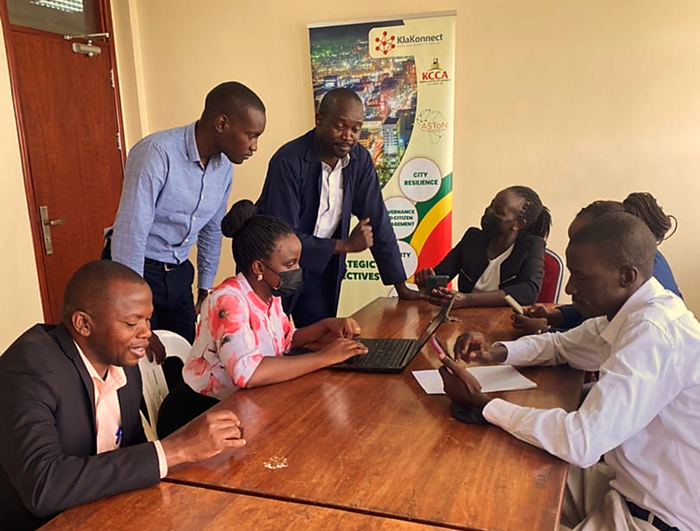4 tips from the ASToN Network about running experiments
ASToN is a network of 11 African cities that uses digital tools to overcome local and global challenges. The program is organised around 3 phases — Explore, Engage, and Experiment. It aims to provide cities with expertise and methodologies to learn through peer exchange, local stakeholder engagement and result-oriented approaches, in order to become more sustainable and inclusive places to live and work.

A couple of weeks ago, the ASToN network met online to reflect on their experiences of experimentation so far. During this event, cities discussed their journeys and shared recommendations on conducting experiments.
At ASToN, we define an experiment as a test devised to learn something. We believe this process is essential to improve the implementation of any full-scale project.
The experimentation process allows us to learn more about where and what we need to change in order to improve an implementation strategy, like the Local Action Plan each city is iterating with ASToN. By identifying and testing the riskiest elements of the plan, cities can engage in a hands-on experience of learning and adapting. It generates measurable and clear results and directs future actions that may differ from the original plan. It also provides cities with insights into what may occur when they will launch a given project, which allows them to revise their plan and improve it before the implementation phase.
Here are 4 tips from ASToN Cities, if you are looking to experiment before scaling-up your project.
1. Set clear objectives
One of our local coordinators, Pulicano Ayebazibwe [1], stressed the importance of identifying the purpose of the experiment and defining precise work hypotheses. Many members of the network agreed that this preparation and intentionality about learning was crucial to the experiment’s success.
Once the organising body has decided to undertake an experiment, certain objectives need to be set. To determine these objectives, David Adjei [2] from the Municipality of Kumasi recommends the SMART approach: Specific, Measurable, Achievable, Realistic, and Time-bound objectives. This system ensures that goals are precise and clear, and that their impacts can be evaluated quantifiably. Alani Lateef [3]recommends that cities “decompose targets to actionable items”, in order to narrow down goals to something achievable in the time and resources available. According to our thematic expert, Bernard Binagwaho [4], pursuing the experimentation process “bit by bit” allows organisers to take immediate action and start to see “real” results.
2. Be ready to adapt
Martin Ssekajja [5] states, “cities evolve at a tremendous speed, problems evolve with them [and] so must the approaches.” Despite any preparation work, there will always be unforeseen circumstances and events that destabilise the original plans.
By conducting experiments, and stopping to reflect and adapt after each experiment, cities can ensure they are prepared to meet changing needs and challenges. Flexibility is essential to ensure that the experiment plan can react based on the insights, and changing priorities.
Martin reports that the completion of the project should always come first. He states that the project should be flexible enough to withstand evolving team structures and changing conditions.
3. Do not underestimate administrative procedures
Procuring digital partners, equipment and other requirements has been a real challenge for ASToN cities. It can be easy to underestimate the quantity of work and time required to navigate this process and how it would affect the project’s schedules. As a result, some calls for tender were unfruitful, and this caused projects to slow down.
During our discussions, cities emphasised the importance of getting to know the procurement rules beforehand as they can vary wildly. Understanding how stringent the rules of this process are and how long it can take ease the process significantly. In some cases tender processes can be avoided as there may be alternative procedures that are more straightforward. As Hamadou Yalcoulye [6] shared, keeping on top of the administration process and involving strategic stakeholders can greatly accelerate these operations.
Technical knowledge is also needed to put together the call for tender. For Wiem Amri [7], the terms of reference should not be overly specific in order to encourage applications from as many candidates as possible. This improves the probability of finding an appropriate partner, she says.Conversely, Oussem believes it is more pertinent to publish a precise call with non-negotiable terms to ensure the quality of the responses.
4. Engage stakeholders and communicate!
ASToN is designed to facilitate collaboration between stakeholders. Local action groups are one of the primary focuses of the project, and this can be used as a valuable resource to generate ideas. These groups are also essential to running successful experiments. Stakeholders should be involved in setting objectives for the experiments, as well as reflecting on what is being learnt.
To achieve successful outcomes, team members must communicate closely with one another. Diverse stakeholders complement each other and enrich the process, however, this multiplicity can also create confusion and disorganisation among participants. As Martin explains, “effective communication with the stakeholders” is a priority to ensure that everyone understands the insight generated through the experiments, and collectively agree on how it might change the implementation plans.


